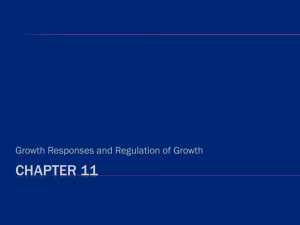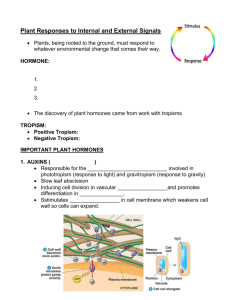File
advertisement
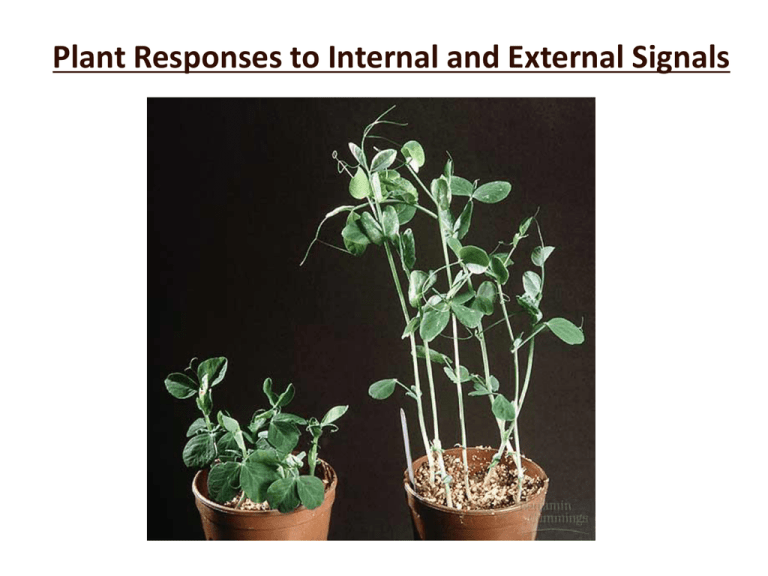
Plant Responses to Internal and External Signals Experiments with Light and the coleoptile Conclusion: Tip of coleoptile senses light some signal was sent from tip to elongating region of coleoptile Excised tip placed on agar block Growth-promoting chemical diffuses into agar block Cells on darker side elongate faster than cells on brighter side AUXIN = chemical messenger that stimulates cell elongation Control (agar block lacking chemical) has no effect Control Agar block with chemical stimulates growth Offset blocks cause curvature Hormones: chemical messengers that coordinate different parts of a multicellular organism Important plant hormones: 1. Auxin – stimulate cell elongation phototropism & gravitropism (high concentrations = herbicide) 2. Cytokinins – cell division (cytokinesis) & differentiation 3. Gibberellins – stem elongation, leaf growth, germination, flowering, fruit development 4. Abscisic Acid – slows growth; closes stomata during H2O stress; promote dormancy 5. Ethylene – promote fruit ripening (positive feedback!); involved in apoptosis (shed leaves, death of annuals) The effects of gibberellin on stem elongation and fruit growth Ethylene Gas: Fruit Ripening Canister of ethylene gas to ripen bananas in shipping container Untreated tomatoes vs. Ethylene treatment Plant Movement 1. Tropisms: growth responses SLOW • Phototropism – light (auxin) • Gravitropism – gravity (auxin) • Thigmotropism – touch 2. Turgor movement: allow plant to make relatively rapid & reversible responses • Venus fly trap, mimosa leaves, “sleep” movement Positive gravitropism in roots: the statolith hypothesis. Thigmotropism: rapid turgor movements by Mimosa plant action potentials Plant Responses to Light • Plants can detect direction, intensity, & wavelenth of light • Phytochromes: light receptors, absorbs mostly red light – Regulate seed germination, shade avoidance Biological Clocks Circadian rhythm: biological clocks Persist w/o environmental cues Frequency = 24 hours Phytochrome system + Biological clock = plant can determine time of year based on amount of light/darkness Photoperiodism: physiological response to the relative length of night & day (i.e. flowering) Short-day plants: flower when nights are long (mums, poinsettia) Long-day plant: flower when nights are short (spinach, iris, veggies) Day-neutral plant: unaffected by photoperiod (tomatoes, rice, dandelions) Night length is a critical factor! How does interrupting the dark period with a brief exposure to light affect flowering? Plant responses to stress 1. Drought (H2O deficit): close stoma release abscisic acid to keep stoma closed Inhibit growth roll leaves reduce SA & transpiration deeper roots 2. Flooding (O2 deprivation): release ethylene root cell death air tubes formed to provide O2 to submerged roots 3. Excess Salt: cell membrane – impede salt uptake produce solutes to ↓ψ - retain H2O 4. Heat: evap. cooling via transpiration heat shock proteins – prevent denaturation 5. Cold: alter lipid composition of membrane (↑unsat. fatty acids, ↑fluidity) increase cytoplasmic solutes antifreeze proteins 6. Herbivores: physical (thorns) chemicals (garlic, mint) recruit predatory animals (parasitoid wasps) 7. Pathogens: 1st line of defense = epidermis 2nd line = pathogen recognition, host-specific
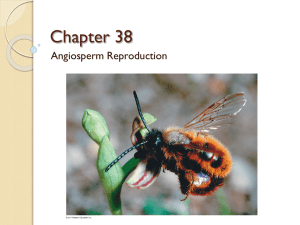
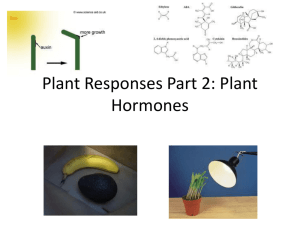
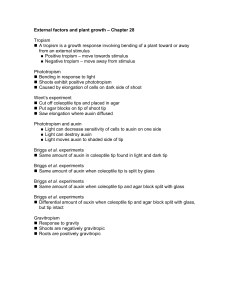
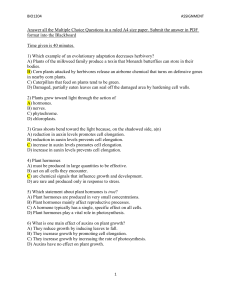
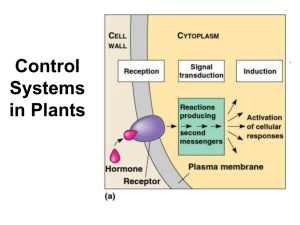
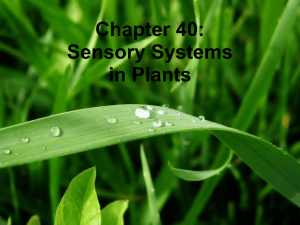
![guide2709.ppt [Compatibility Mode]](http://s3.studylib.net/store/data/008368905_1-88e9b7f8222ebbb87620800faad10ad9-300x300.png)


